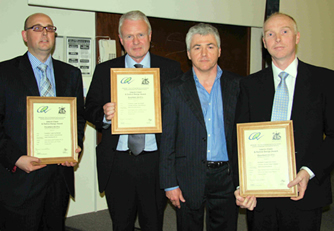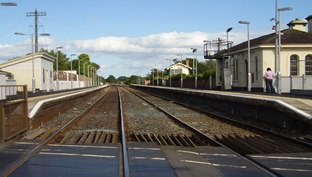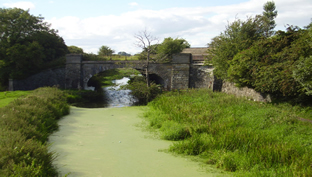Knockmore, Lurgan Track Upgrade |

93.5% |
Client & Design Award
Project Team:
Client: Translink
- Northern Ireland Railways
Project Manager, Feasibility Study,
Initial Design:
Hyder Consulting
The Project
 |
|
|
The Belfast to Dublin railway line forms the strategic spine of the Northern Ireland railway system and its performance is of national economic and political significance.
The line has suffered from progressive deterioration of the track formation over a number of years and, as a consequence, numerous semi-permanent speed restrictions have been imposed along the entire route length. These both limit the operational effectiveness of the railway and act as a disincentive to further passenger growth.
 |
|
|
In recognition of these issues, Translink are embarking on a progressive upgrade of key sections of the route corridor in order to improve line speeds within the commuter belt surrounding Belfast and reduce journey times between Belfast and Dublin.
The project comprises a 12-mile length of double track running from Lisburn in the north to Lurgan in the south. The principal project objective is to bring the track quality into line with the original 90mph maximum design speed. The project works involve:
- Replacement of the track, ballast and drainage throughout the route length
- Reduction in ballast levels in certain locations to mitigate previous repeated over-tamping
- Construction of a safe cess along the route
- Replacement of signalling and telecommunications cabling along the route length
- Installation of new signalling and telecommunications ducting along approximately 60% of the route length (between Knockmore and Moira)
- Re-waterproofing of a number of underbridges
The project symbolises the revived spirit of enterprise in Northern Ireland and will significantly contribute to the improvement of the principal transport links between Northern and Southern Ireland.
 |
|
|
Key Issues
The project is essentially a refurbishment project. A project execution and detailed project environmental management plan have been developed which record environmental considerations at key stages of the project. The following key issues have been dealt with on the project so far:
- The project has used a progressive ECI arrangement to benefit from local knowledge of contractors.
- The site is close to a Site of Local Nature Conservation Interest, and surveys have revealed protected species and Japanese Knotweed to be present on site
- Consultation with statutory bodies has already been taking place on construction methods and the location of the site compound(s).
- Drainage along the present line is poor - the use of Sustainable Drainage Systems is being considered, with the potential to improve water quality in the two local watercourses.
- Material options - the project has considered using slab track vs conventional track where access is difficult, as this requires less maintenance. The project also considered replacing concrete sleepers with steel sleepers, which also require less maintenance.
- Rail, ballast and sleepers - surveys have been completed which looked at the number of concrete sleepers which could be re-used and the condition of rails and ballast (and suitability for re-use).
- The railway crosses nine level crossings, eleven occupational crossings and a number of listed structures. The rationalisation of occupational crossings is a key part of the project. Consultation with the users of these crossing has been undertaken.
- Due to the length of the construction area, a consultation programme is being developed to engage with the multiplicity of external stakeholders in order to develop an effective construction programme and possessions regime.
 |
|
|
